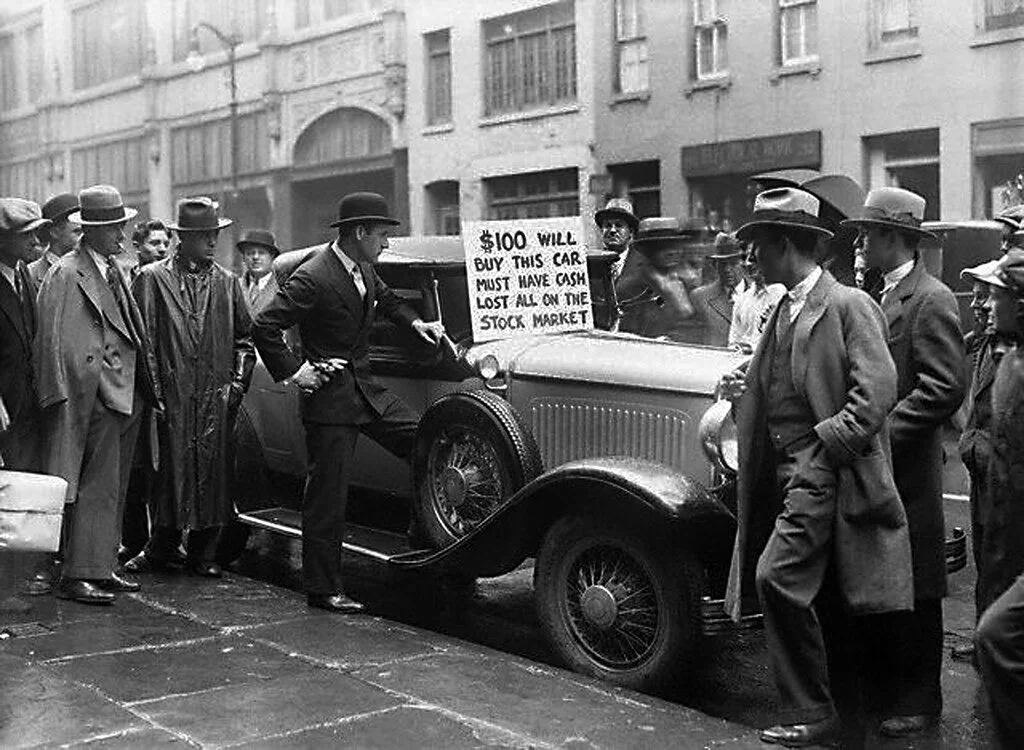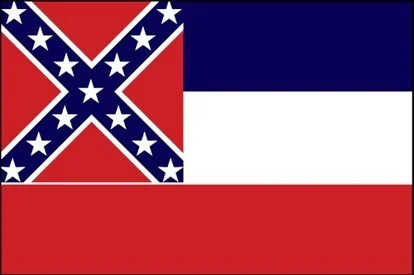The Mississippi Bubble
Friday, June 11th, US Treasury Secretary Mnuchin announced that there would be an additional $1 trillion of stimulus money coming from the government to keep markets inflated once the Federal Reserve bank prints and loans the Federal government the money since the taxpayers are broke.[1]
A similar thing happened in France in the early 1700’s.
In 1720, John Law had his government bank, the Banque Royale, print money, inflate the value of the Mississippi Company (Mississippi Bubble), accept French government debt at face value in exchange for stock in the company, and when enough people tried to trade their bank notes and shares for gold and silver, the value of the Mississippi Company collapsed along with the value of the bank notes and government debt.
The French were impoverished for the same reasons that the USA are being impoverished today: Speculators thought that someone would buy their shares at a higher price, because stocks always go up when the government prints money to buy stocks.
The Mississippi Bubble was a result of desperation. In the early 18th century, the French Monarchy was broke from foreign wars (War of Spanish Succession 1701-1713/1714) and domestic largess when King Louis XIV died in 1715.
According to Alasdair Macleod writing for Mises.org,
“The death of Louis XIV in 1715 left France’s state finances (which were the royal finances) in a state of bankruptcy. The royal debts were three billion livres, annual income 145 million, and expenditure 142 million. That meant only three million livres were available to pay the 220 million interest on the debt, and consequently the debt, mostlybillets d’etat (the equivalent of modern treasury bills) and billets de monaie (floating and war debt) traded at a discount of as 1 much as 80% of face value.”[2]
His 5 year old son became King Louis XV and the Duke of Orleans, Phillipe II, became the regent until the boy was old enough to rule.
The Duke, looking to save his government from bankruptcy and chaos, heard the advice of his Scottish friend, John Law.
Again, according to Alasdair Macleod,
“At about this time, Law presented himself at court and offered his considered solution to the Regent. He diagnosed France’s problem as there being insufficient money in circulation, restricted by it being only gold and silver. He recommended the addition of a paper currency, such as that in Britain and Holland, and its use to extend credit.”
The paper currency of Britain referenced above led to the South Sea Bubble, which also burst in 1720.
On May 5 , 1716, John Law was allowed to open the Banque General and started printing paper money. Prior to this, the French government had debased the gold and silver money in 1713 by mixing in base metals of lesser value into the coins. They did this to have more money to pay their bills at face value without needing to pay with the same weight of gold or silver. They could do this because the police were not going to arrest the King nor his regent. However, it ultimately led to price inflation for the public.
Initially, the French public feared that the Banque General’s paper money would lose value like their debased gold and silver coins. Law promised to redeem his banknotes with the coins that were deposited, as opposed to using any of the debased coins in the future.
In this way, he collected deposits of gold and silver and issued paper money to people looking for a safe-haven asset to protect from inflation.
His bank grew wealthy and in April 1717, the banknotes could legally be used to pay taxes, giving them more value.
The economist Doug French writes in his book, Early Speculative Bubbles and the Increase in the Money Supply,
“In the beginning, banknotes were to be payable in specie [gold or silver] of the weight and standard of the date. The Bank was not subject to taxation, nor were foreigners’ deposits subject to confiscation, in the case of war. Depositors would receive banknotes on sight for their coin. The Bank could open deposit accounts, which could be withdrawn, or through which an amount could be transferred to another party, similar to today’s check writing. Bills and letters of exchange could be discounted by the Bank. However, the bank was not to engage in trade, maritime insurance, or commission business. There was no limit placed on the number of banknotes that could be issued by the bank. It was left to John Law’s judgment as to the amount of banknotes to be in circulation.”[3]
Also in 1717, Banque General bought the Mississippi Company. This company would cause Law’s wealth and influence to skyrocket as it was used to finance the French government and make speculators rich over the next few years. The word, “Millionaire,” originates from this time.
According to the investor Jesse Colombo,
“In 1717, John Law used his growing rapport within French society to acquire a struggling trading company, the Mississippi Company, which he renamed to ‘the Compagnie d’Occident’ (the Company of the West) and was granted a monopoly on trade with and development of France’s North American colonies along the Mississippi River. These territories (see chart above) spanned a wide swath of area from present-day Louisiana up to Canada and were considered to be valuable for their abundance of resources such as beaver skins and precious metals (which later proved to be untrue). As Law’s influence continued to grow, the Compagnie d’Occident’s name was changed to ‘Compagnie des Indes (‘Company of the Indies’) and according to David Smant, ‘expanded to monopolize all French trade outside Europe. In July 1719 the Compagnie purchased the right to mint new coinage. In August 1719 the Compagnie bought the right to collect all French indirect taxes and in October 1719 the Compagnie took over the collection of direct taxes. Finally, a plan was launched to restructure most of the national debt, whereby the remainder of existing government debt would be exchanged for Compagnie shares.’ By this time, John Law had amassed an incredible amount of power as his companies now controlled both France’s foreign trade and its finances.”[4]
Eventually too many people wanted to redeem their paper money for gold and silver and the Banque General (renamed the Banque Royale in January 1719) could not meet demand for the deposits.
Jon Moen, Ph.D., Chairman of the Department of Economics at the University of Mississippi, in a 2001 article for Mississippi History Now wrote,
“Shares in the Mississippi Company started at around 500 livres tournois (the French unit of account at the time) per share in January 1719. By December 1719, share prices had reached 10,000 livres, an increase of 1900 percent in just under a year. The market became so seductive that people from the working class began investing whatever small sums they could scrape together. New millionaires were commonplace.
The weak spot in Law's scheme was his willingness to issue more bank notes to fund purchases of shares in the company. Stock prices began falling in January 1720 as some investors sold shares to turn capital gains into gold coin. To stop the sell-off, Law restricted any payment in gold that was more than 100 livres. The paper notes of the Bank Royale were made legal tender, which meant that they could be used to pay taxes and settle most debts. The company was trying to get people to accept the paper notes rather than gold. The bank subsequently promised to exchange its notes for shares in the company at the going market price of 10,000 livres. This attempt to turn stock shares into money resulted in a sudden doubling of the money supply in France. It is not surprising then that inflation started to take off. Inflation reached a monthly rate of 23 percent in January 1720.
Law devalued shares in the company in several stages during 1720, and the value of bank notes was reduced to 50 percent of their face value. By September 1720 the price of shares in the company had fallen to 2,000 livres and to 1,000 by December. The fall in the price of stock allowed Law's enemies to take control of the company by confiscating the shares of investors who could not prove they had actually paid for their shares with real assets rather than credit. This reduced investor shares, or shares outstanding, by two-thirds. By September 1721 share prices had dropped to 500 livres, where they had been at the beginning.”[5]
In the end, investors with paper money and paper stocks were left impoverished as the paper fell in value against gold and silver.
The reason that the Mississippi Company failed was because it never actually got around to producing anything. It was just a speculative bubble financed by inflation and debt.
History repeats.
Total Assets of the Federal Reserve bank
The Federal Reserve will keep printing money to inflate the bubbles in Mississippi and the rest of the United States by buying government debt at face value. When enough people try to buy gold and silver, the bullion banks[6] will not be able to deliver, so the value of the bubbles will collapse along with the value of the dollar (Federal Reserve Notes) and government debt.[7]
Bubbles pop.
“I think we are actually at a point of encouraging risk-taking, and that should give us pause. Investors really do understand now that we will be there to prevent serious losses. It is not that it is easy for them to make money but that they have every incentive to take more risk, and they are doing so. Meanwhile, we look like we are blowing a fixed-income duration bubble right across the credit spectrum that will result in big losses when rates come up down the road. You can almost say that that is our strategy.” -Jerome Powell, Chairman of the Federal Reserve, then member of the Board of Governors, Oct 2012 Federal Open Market Committee Meeting.
[2]https://mises.org/wire/john-law-and-mississippi-bubble-%E2%80%93-300-years-later
[3]https://mises-media.s3.amazonaws.com/Early%20Speculative%20Bubbles%20and%20Increases%20in%20the%20Supply%20of%20Money_2.pdf?file=1&type=document Early Speculative Bubbles and Increases in the Money Supply, Ch 6. The MississippiBubble, Pg. 55
[4]http://www.thebubblebubble.com/mississippi-bubble
[5]http://www.mshistorynow.mdah.ms.gov/articles/70/john-law-and-the-mississippi-bubble-1718-1720
[6] https://www.bullionstar.com/gold-university/bullion-banking-mechanics
[7]https://www.hamiltonmobley.com/blog/interest-rates-and-inflation



